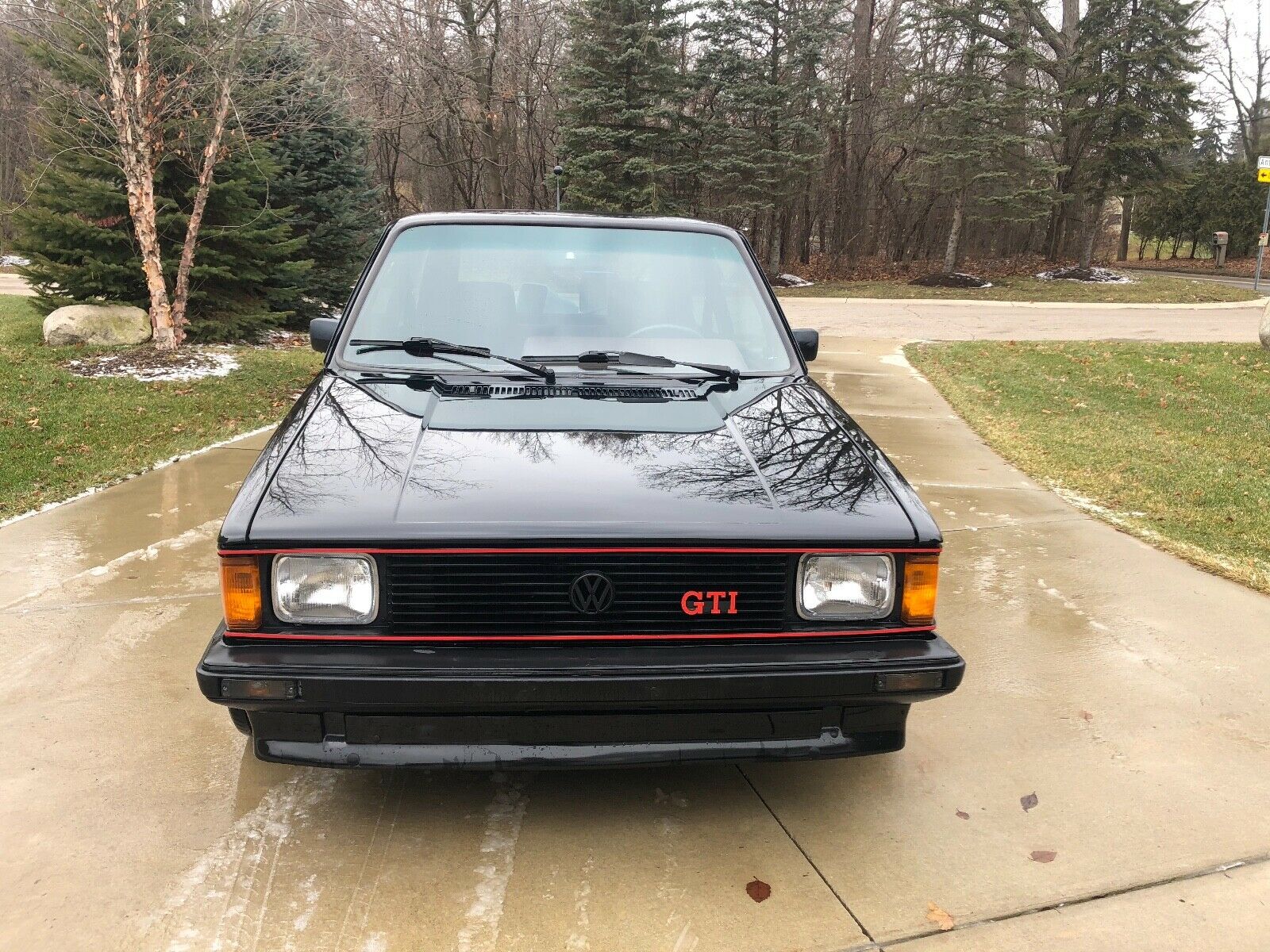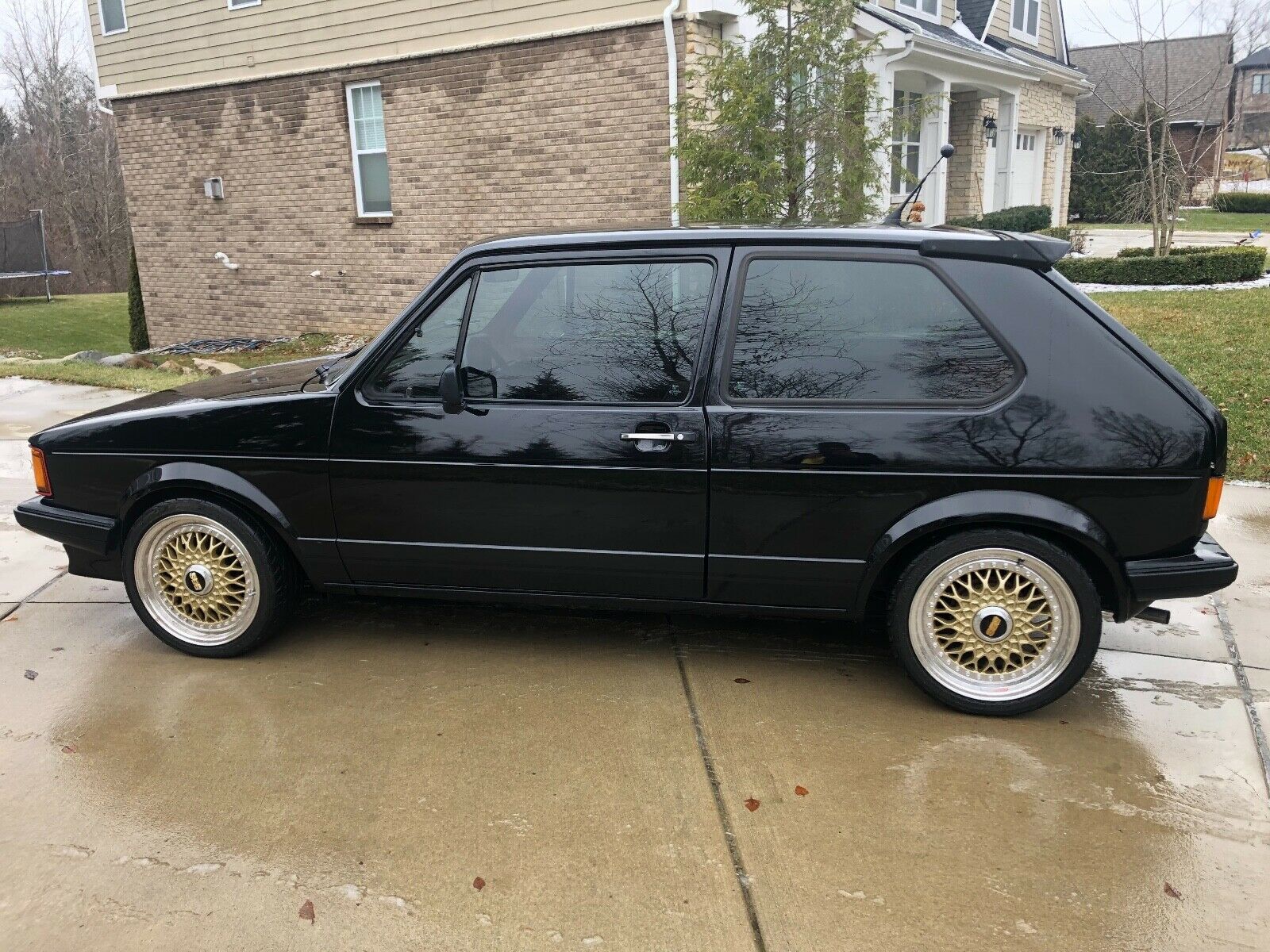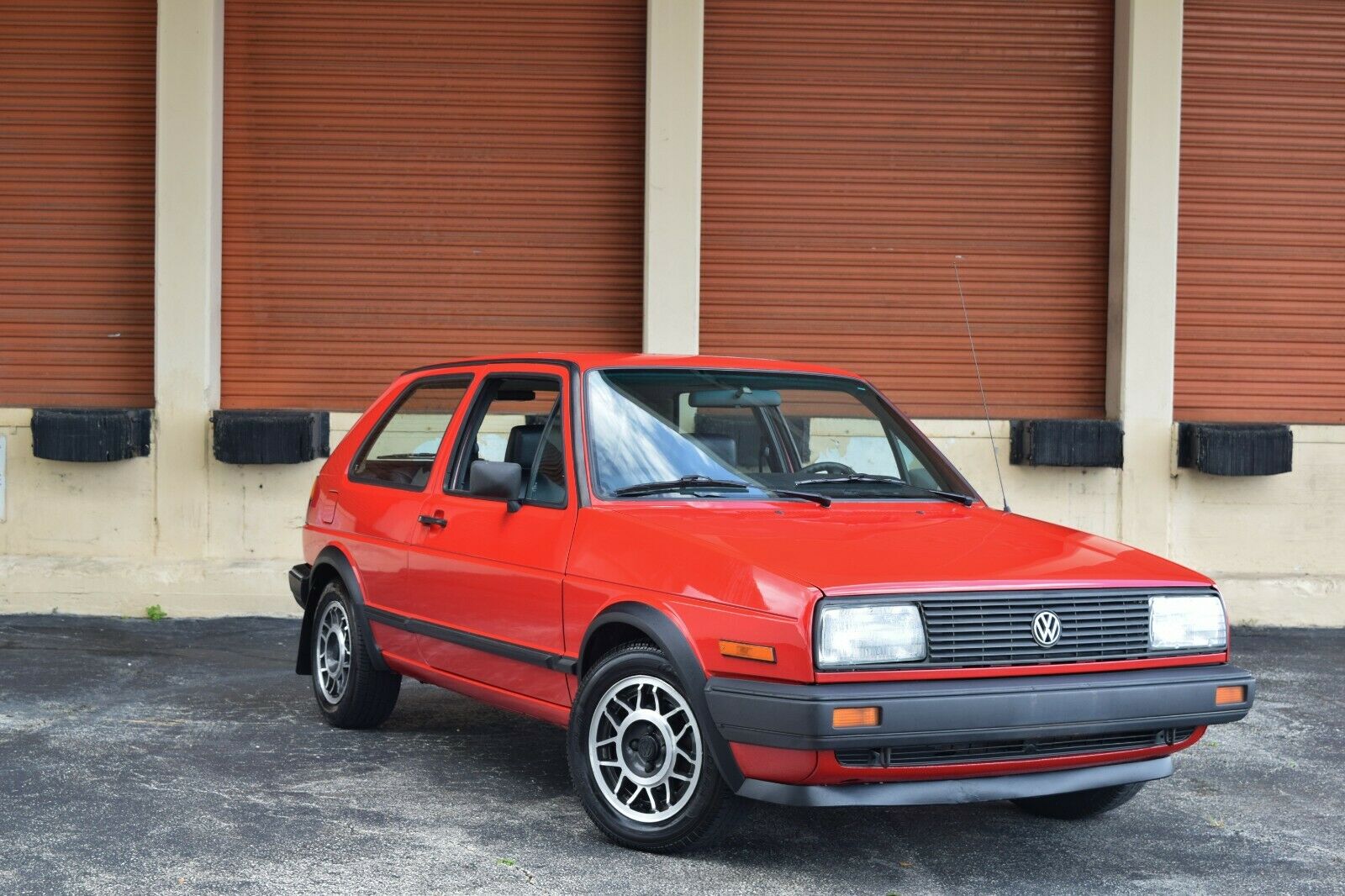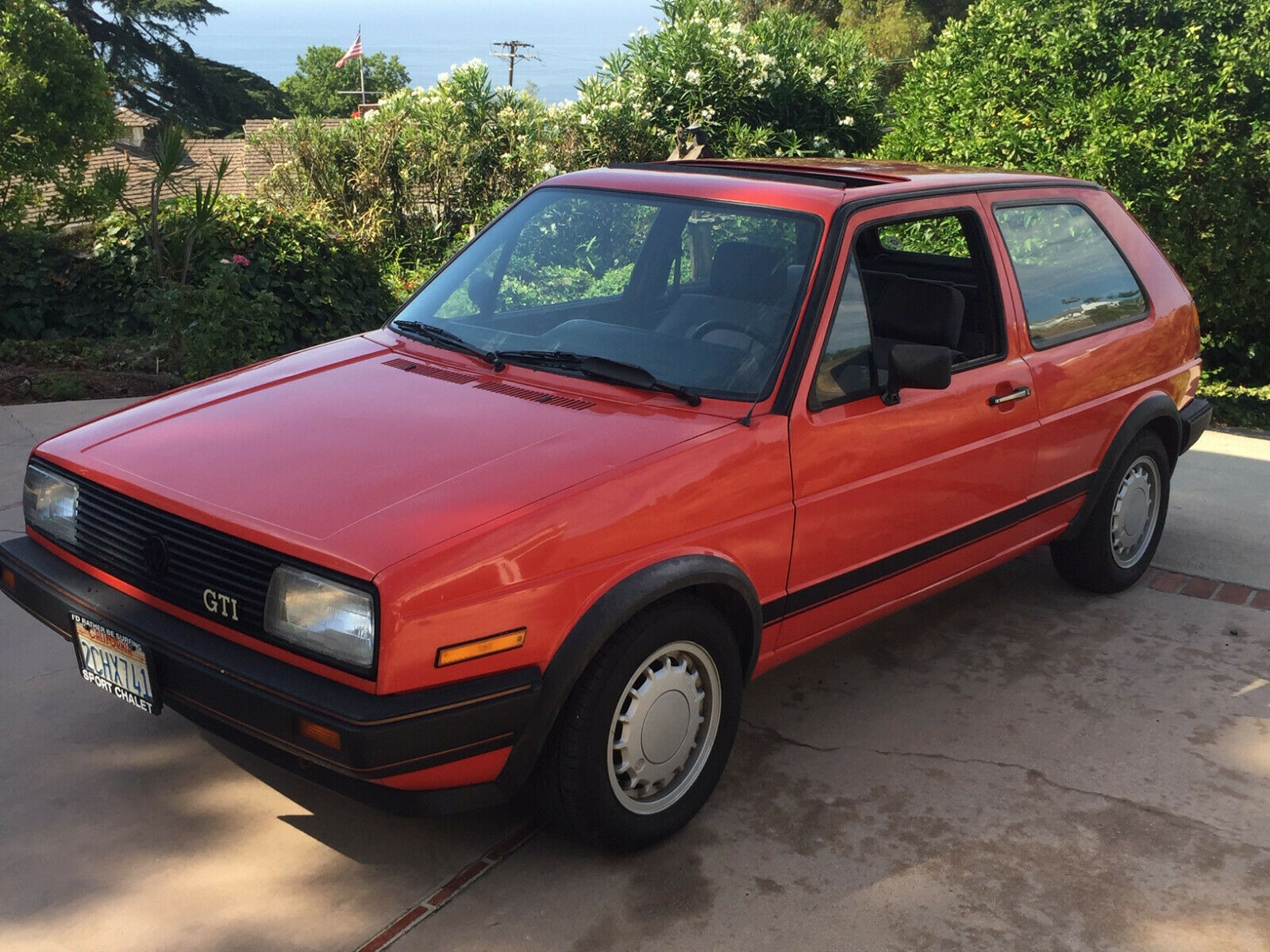If, for some reason, you didn’t really love the modified GTI I just looked at and were hoping for a more pure version of the Westmoreland Wonder, well…I’m not sure this is it, either. But it is a lot closer to how it was delivered new, with sealed-beam headlights, a stock interior, and the original 8-valve under the hood. It’s also traveled just under 55,000 miles since new. And if that wasn’t enough to tempt you, it’s got WORKING AIR CONDITIONING. No, I’m not kidding:
Tag: EA827
I owned an A1 GTI once. It was one of the worst automotive decisions I’ve ever made. This comes from a man who bought a non-running Audi 200 Avant full of bees in a field in New Hampshire, mind you.
Back in 1998, I bought a non-running, rusty and very tired black over blue 1984 example for $300. I had every intention of “restoring” it to back good condition, but I was 21 and a poor college student and it was 14. But it wasn’t the age (or the mileage, Indiana), it was how it had been treated in that 14 years. After all, my current Passat is 17 years old and while it’s not perfect, it’s pretty damn nice. Heck, my M3 is 16 years old and basically looks and drives new. No, age was much harder on the cars of the early 1980s; plastics weren’t as durable as they are now, nor was paint. Metal was more rust prone and the electronics were no where near as reliable even though there were so far fewer in the car. To back my GTi up, you could simply look through the crease in the bodywork between the taillights and the rear floor where there was no longer metal. Every single bushing was gone, and what was left vibrated like an unattended paint shaker at Home Depot set to high. The paint was ruined – the car had clearly been hit at some point, so the passenger door and fender were a different shade of black than the rest of the car, which could more be described as dark gray spread very thinly over light gray primer. One time it started itself, which was a bit scary. Another time, it refused to start because the starter had removed itself from the transmission, but only enough to jam the gear into the flywheel. Then one fateful night one a ride home from a late shift at work, the fuse box lit on fire, consuming the functionality of all electrics save the high beams. I had sunk a few thousand dollars into keeping that car running and improving it over the year and a half I drove it. Ultimately I sold it for parts – for $300.
I won’t over romanticize my life with a GTI. I was not sad to see it go. I don’t wish I had it back – in fact, it may be the only car I owned that I never long to sit in again. Indeed, I even have more connection to a few parts cars that I bought but never drove. But, I will say that it did provide me with some entertaining stories. And when it ran right (there were at least two times), it was really a joy to be behind the wheel. There were glimpses of its former glory; you could get in, start it up and immediately be driving at 11/10ths everywhere you went. 40 m.p.h. has only felt near as exhilarating on my bicycle. And the shape was beautiful in such a strange, boxy way. I certainly wouldn’t mind owning a GTI (again), and every time I see one pop up I take notice:
CLICK FOR DETAILS: 1983 Volkswagen GTI on eBay
1 CommentThe 1987 launch of Volkswagen’s fabled 16 valve motor into the Golf lineup created an interesting transition. VW had a high performance version of the GTI now, but it was also a bit dear at $12,000. So, VWoA decided to continue running the less-expensive 8 valve version for alongside for one more year (this was mimicked in the Jetta GLI lineup, as well). This split lineup would resume in 1990 for the GTI.
However, for the ’87-88 model year, VW added a third Golf performance version. Labeled the GT, outwardly it shared many characteristics with the early A2 8V GTIs. The same 14″ alloy wheels were there, black fender flares, special interior fabric, a 4-spoke sport steering wheel and red-splash decals front and rear. However, if you looked closely there were several differences to the GTI. The GT didn’t have the red-stripe trim outside of the more illustrious GTIs. Nor did it have the rear spoiler, sport seats, or a few other unseen details of the same-year GTI like uprated suspension and 4-wheel discs. So why get one? Well, first off it was a bit less expensive than the GTI. And, underneath it carried the same close-ratio 5-speed manual hooked to the high-compression RD 1.8 8V from the GTI. But the real benefit of the GT was that it came in more colors, with more doors (there was no 5-door GTI in the U.S. yet, nor for a while) and with an available automatic (again, not for the GTI). Of course, by the time you selected all of that stuff you were in GTI pricing…which meant that few GTs sold, and they’re very rare to see today:
CLICK FOR DETAILS: 1987 Volkswagen Golf GT on eBay
1 CommentUpdate 9/21/19: This GTI sold for $5,555.
If 1984 GTI was the all-star high school athlete that just couldn’t lose, the 1985 GTI was the freshman college student he became. Sure, the DNA was the same but he seemed somehow softer, wiser and…well, there was that ‘Freshman 15’ that he put on with the all-you-can-eat meal plan for athletes. He was also a lot more fun to spend longer times with than the high schooler had been. That didn’t mean he still couldn’t stretch his legs when he wanted, and indeed the ’85 GTI had a few tricks up its sleeve to make up for its additional mass. Mostly that came down to the motor; the high-compression ‘HT’ 1.8 inline-4 with KE-Jetronic injection now made 100 horsepower and 105 lb.ft of torque thanks to a bit of tweaking. It still wore the red-striped exterior trim and signature ‘GTI’ badging, and the rear hatch was still blacked-out around the window. But now there was a slight spoiler included at the top as well. 14″ alloy wheels still ruled the day, but a new ‘bottlecap’ design was introduced and they wore 185-60-14 Goodyear Eagle GT+4 tires. That first year of the A2 GTI, you could only get three colors – Black, Diamond Silver Metallic or Mars Red as we see here:
CLICK FOR DETAILS: 1985 Volkswagen GTI on eBay
2 CommentsIn the early 1970s, a major change swept through Volkswagen. For some time, Volkswagen attempted to create unique ways to fit more people into a Beetle. The Type 3 abandoned the Beetle’s 2-door, fixed sloping roof profile for a (slightly) more conventional sedan, fastback and even variant wagon platform. That developed ultimately into the Type 4; the 411 and 412 again further moved VW “mainstream” with their Pininfarina bodies and more practical 4-door layouts.
Still, the writing was on the wall. Corporate partner Audi’s launch of the B1 chassis 80 model complete revolutionized both marque’s lineups over the next decade as rear-engine, air-cooled products were phased out and steadily replaced by new front-drive, water-cooled efficient and cheap to manufacture designs. The Audi 80’s design was refined by Giugiaro, so VW turned again to him to work his magic on the 412’s replacement.
What emerged after brief flirtation with the NSU-based K70 was the Passat. Unlike the traditional sedan that Audi got with the 80, the B1 Passat featured a dramatically sloping rear hatchback which picked up styling cues from both the Type 3 and Type 4, but of course was much more angular. Volkswagen offered three configurations for the first Passat; 3- and 5-door hatchbacks, and a 5-door variant wagon. These were introduced before the A1 Golf debuted in the U.S., and like the Golf, the Passat was given a North America specific name – the Dasher:









